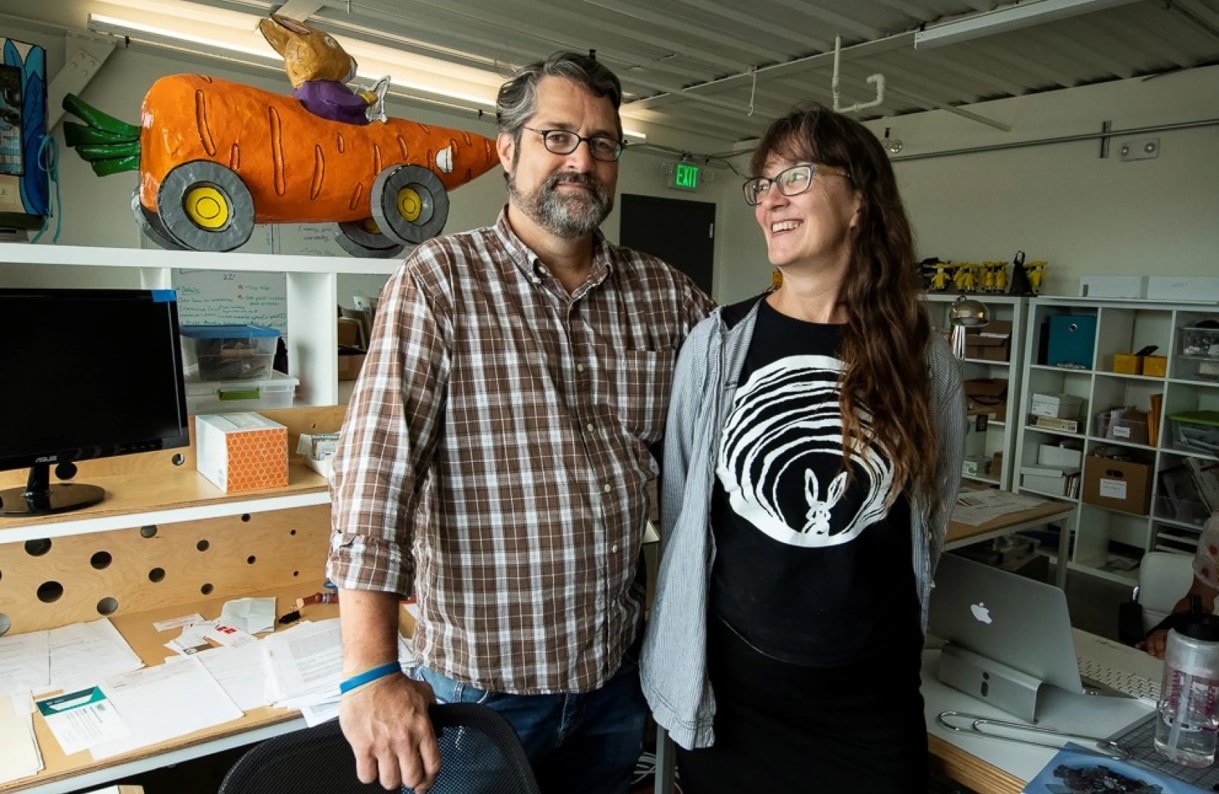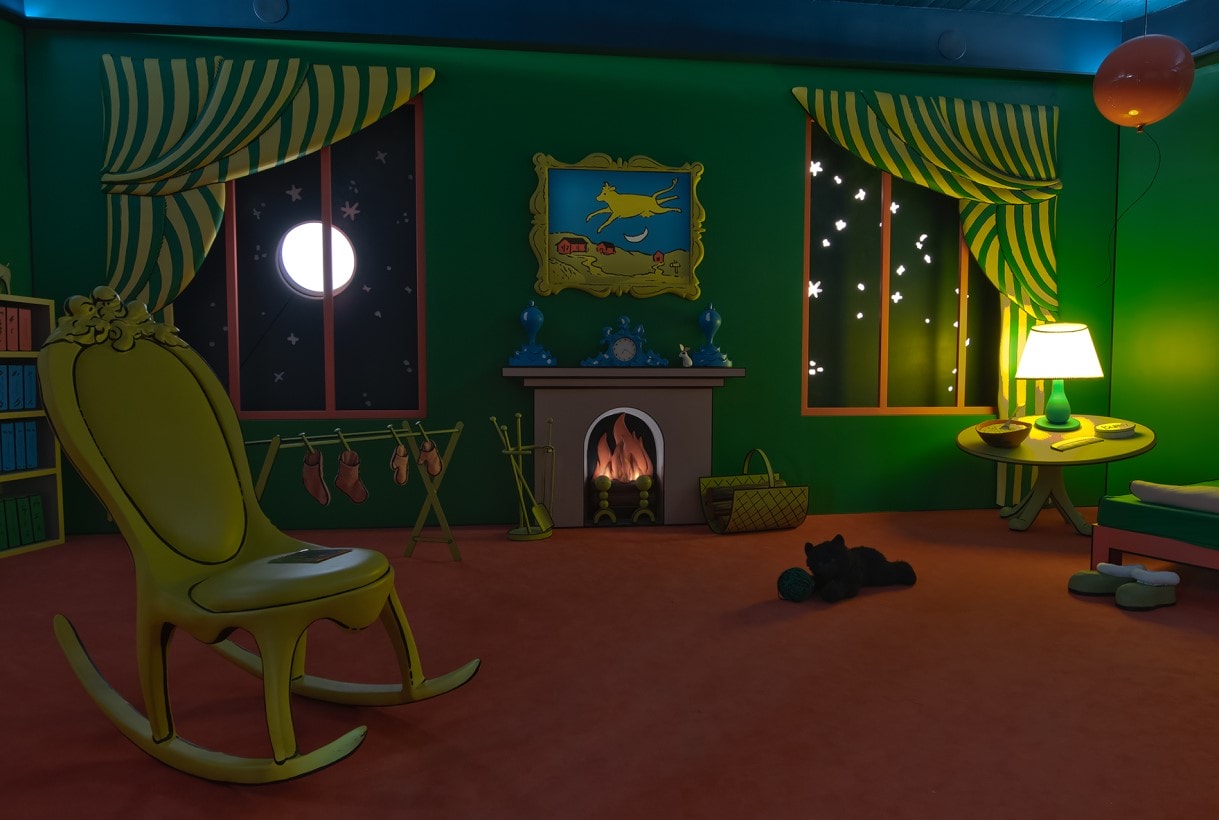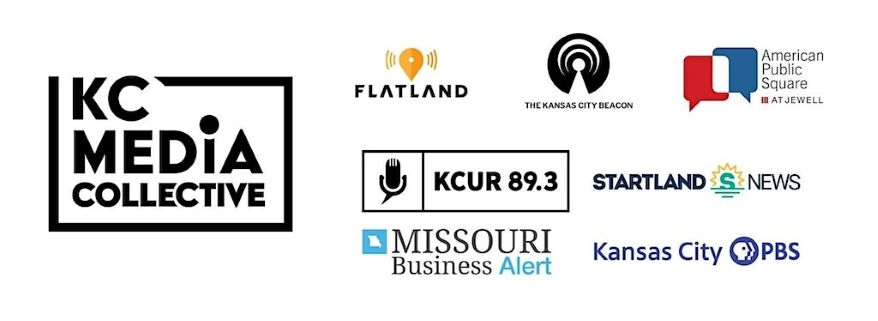Kansas City Can Finally Go Down The Rabbit Hole at a New Museum for Children’s Literature Co-founders Deb Pettid and Pete Cowdin have spent the last six years bringing their unique vision to life.
Published March 8th, 2024 at 11:49 AM
Above image credit: A colorful merry-go-round with tigers in an exhibit still in progress based on “Sam and the Tigers,” the book by Julius Lester. Each exhibit includes bookshelves. (Julie Denesha | KCUR 89.3)There’s been a flurry of activity on the exhibit floor at The Rabbit Hole this month as artists and fabricators prepare for the museum’s long-awaited opening day, slated for March 12.
The milestone caps six years of dedication by co-founders Deb Pettid and Pete Cowdin, who are married. The pair owned the Reading Reptile bookstore in Brookside for more than three decades, but closed it in 2016 to focus on their new vision.
“Our mandate is to create an exhibit around a book that not only looks and feels like it, but captures the spirit of the book,” Cowdin said.

The Rabbit Hole project officially kicked off in 2018 with a $15 million capital campaign. With the money, Pettid and Cowdin bought a massive, four-story warehouse in North Kansas City’s Iron District. Then, they hired a core team of area artists and fabricators to bring the museum to life.
Cowdin said it’s all designed to help children and their parents connect through stories without a lot of unnecessary distractions.
“Immersion isn’t just big projections on walls or being surrounded by big things,” he said. “It’s about finding all of the little things that combine to make you feel as if you’re in another place.”
To that end, fabricators like Grant Kelso and Evan Stein recently found themselves navigating a faux swamp of felt cattail fronds. The two were carrying a dollhouse-sized model that readers might recognize from the “Frog and Toad” children’s books.
“The house is actually really heavy and it’s also super awkward but, basically, I pick it up in one hand and then we try to avoid all the grass and then it puzzle-pieces in very nicely into its slotted hole — ta-da!” Kelso said with a flourish.
He built the house based on scenes from Arnold Lobel’s 1970s book series about the adventures of two amphibian friends. It’s one of 45 exhibits celebrating a century of children’s literature in America.

“I actually approached this as if it was a real house of real floorboards, and putting up the walls with studs,” Kelso said. “Some of the floors even have, like, studs you can see.”
Kelso said putting Toad’s house into place reminded him of his childhood.
“It actually tugs a little heartstring of mine from when my mom used to read books to me,” Kelso said. “She read pretty much all the books in this museum to me: ‘Where the Sidewalk Ends’ and ‘Goodnight Moon’ and, of course, ‘Frog and Toad.’”
“I love this place,” Kelso said.
‘You Have to Be Close’
Co-founder Deb Pettid said those childhood memories are part of the museum’s universal appeal.
“That is a big part of that emotional connection to reading is that physical connection that you feel with whomever is reading to you,” she said. “Whether you’re sitting next to your friend or a sibling or a parent, you have to be close to look at the pages together.”

One of the first projects Pettid and Cowdin tackled was a life-sized replica from the book “Goodnight Moon,” written by Margaret Wise Brown and illustrated by Clement Hurd.
“When you’re standing in the Great Green Room, it does start to feel like you’re inside the book,” Cowdin said.
Just like in the 1947 classic, there’s “a comb and a brush and a bowl full of mush” — not real, of course. And if you lift the receiver of a telephone there, you can hear the illustrator’s son, Thatcher Hurd, read the book.
Hurd said, 77 years after it was first published, “Goodnight Moon” is now a cornerstone of bedtime reading for parents.
“It’s a fascinating sort of phenomenon, this book, because it just is in people’s hearts,” Hurd said. “More than one generation have been reading it, and there’s something magical about it.”
“That feeling of a book that you loved as a child, I mean, it’s so strong,” he said.” It’s so deep.”
Creating The Rabbit Hole
‘There’s Nothing Else Like The Rabbit Hole’
According to Emily Hane, the museum’s development director, The Rabbit Hole currently has the rights to more than 70 pieces of classic literature.
“No other museum has the rights to such a diversity of works by different creators, through different time lines, published by different publishers,” she said. “There’s nothing else like The Rabbit Hole anywhere in the country.”
That draw was enough to earn a mention in The New York Time’s list of “52 Places to Go in 2024.”
And the co-founders’ plan from the beginning has always been to expand the exhibits they offer and slowly grow into the 165,000-square-foot warehouse space.
The Lucky Rabbit Bookstore will be open for visitors on opening day, and The Rabbit Hole Cafe will open later this spring.
An immersive gallery where a story is told from cover to cover is anticipated in October. And eventually, Pettid and Cowdin said, there will be a letterpress print shop and bindery, a writing lab, a resource library and a reading room.
“I think any child can experience wonder here, but I don’t want the wonder to stop at children,” said fabricator Evan Stein, back in the “Frog and Toad” exhibit.
“I think that any grown up can, and probably should, experience some wonder, and I hope that we can provide that for them,” he said.
Julie Denesha is the arts reporter for KCUR 89.3, where this story first appeared. KCUR is a member of the KC Media Collective.



